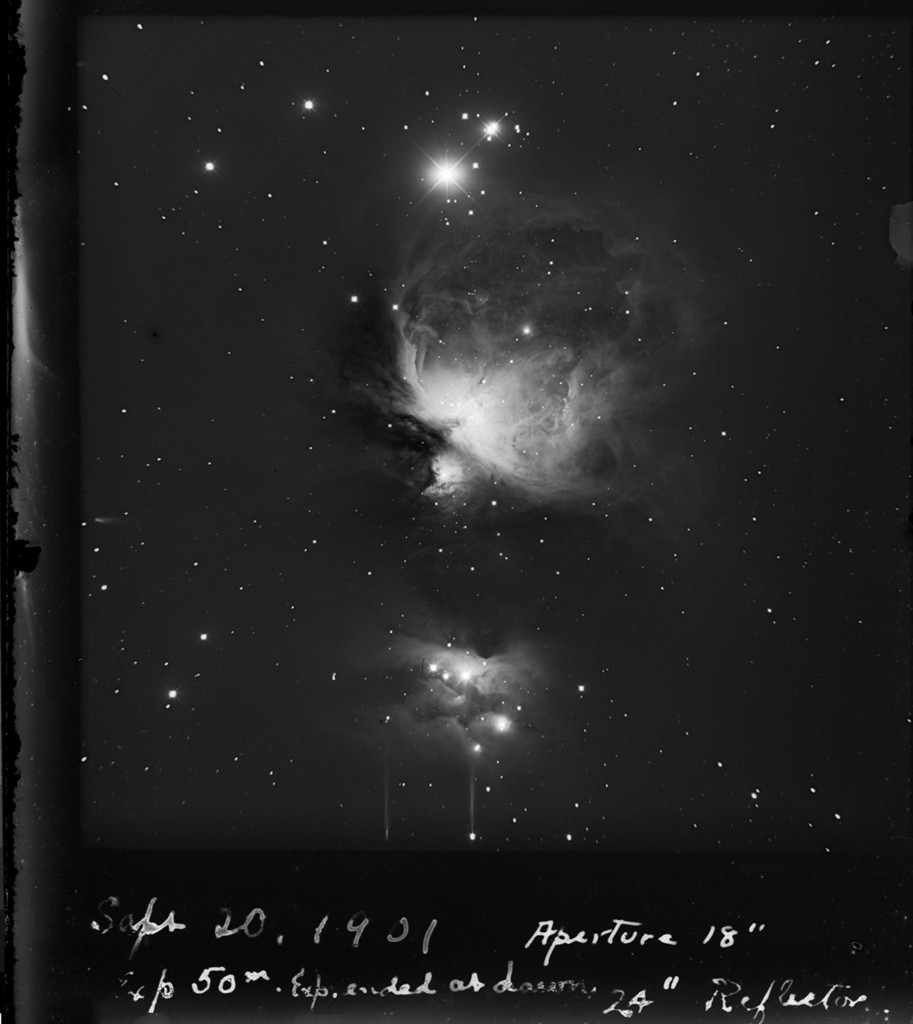901年的老照片:猎户大星云
2019 August 17
1901 Photograph: The Orion Nebula
Image Credit: George Ritchey, Yerkes Observatory – Digitization Project: W. Cerny,
R. Kron, Y. Liang, J. Lin, M. Martinez, E. Medina, B. Moss, B. Ogonor, M. Ransom, J. Sanchez (Univ. of Chicago)
Explanation: By the turn of the 20th century advances in photography contributed an important tool for astronomers. Improving photographic materials, long exposures, and new telescope designs produced astronomical images with details not visible at the telescopic eyepiece alone. Remarkably recognizable to astrophotographers today, this stunning image of the star forming Orion Nebula was captured in 1901 by American astronomer and telescope designer George Ritchey. The original glass photographic plate, sensitive to green and blue wavelengths, has been digitized and light-to-dark inverted to produce a positive image. His hand written notes indicate a 50 minute long exposure that ended at dawn and a reflecting telescope aperture of 24 inches masked to 18 inches to improve the sharpness of the recorded image. Ritchey’s plates from over a hundred years ago preserve astronomical data and can still be used for exploring astrophysical processes.
1901年的老照片:猎户大星云
影像提供: George Ritchey, Yerkes Observatory – Digitization Project: W. Cerny,
R. Kron, Y. Liang, J. Lin, M. Martinez, E. Medina, B. Moss, B. Ogonor, M. Ransom, J. Sanchez (Univ. of Chicago)
说明: 20世纪初照相科技的进步,为天文学家带来一项重要的 工具。照相材料的精进、长曝光及采用新设计打造的望远镜,让天文影像记录的信息与细节,超出透过 望远镜目镜之所见。上面这幅由美国天文学家兼望远镜设计者乔治·里奇,在1901年拍摄的恒星形成区猎户星云之影像,对现代的天文摄影者来说,应是轻易可辨。对绿及蓝光较灵敏的原始玻璃照相底板,经过数位化,然后明暗经过反转以制成正片影像。摄影者写在底板上的注记有:50分钟的长曝光截止于破晓前,原先0.61米口径的反射式望远镜,加上0.46米的遮罩,以提高影像的清晰度。里奇在1百多年前用照相底板记录的天文资料,至今仍可用来探索天文物理过程。
1901 Nián de lǎo zhàopiàn: Lièhù dà xīngyú

